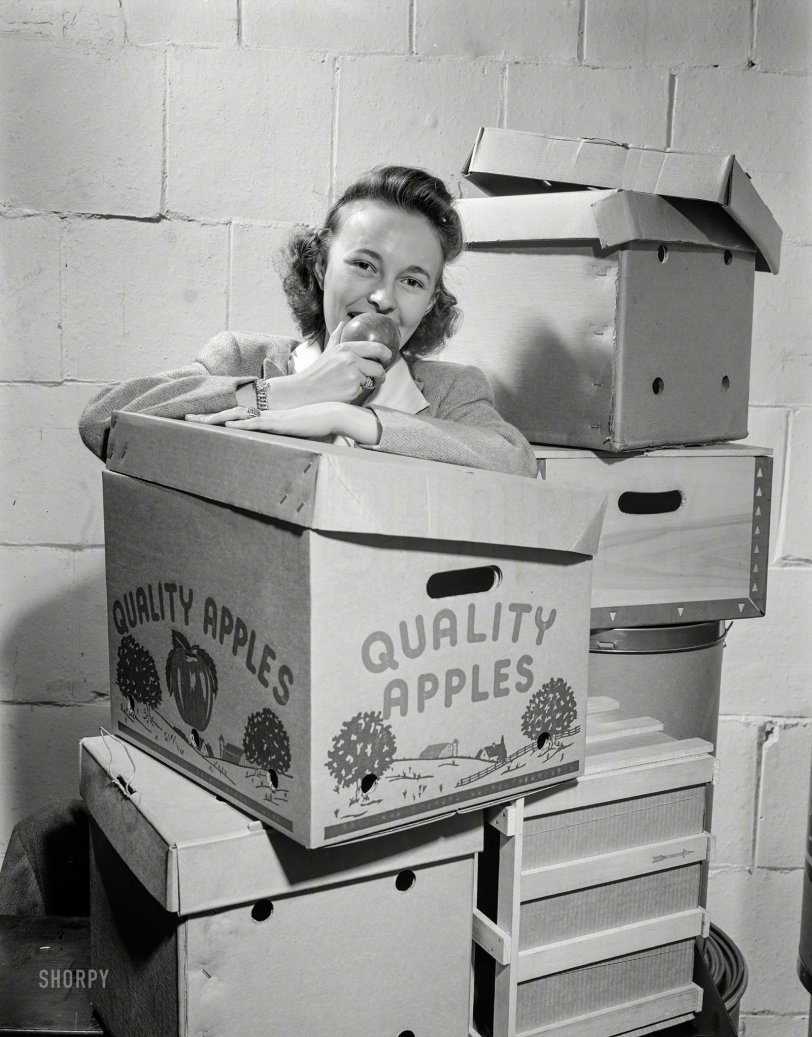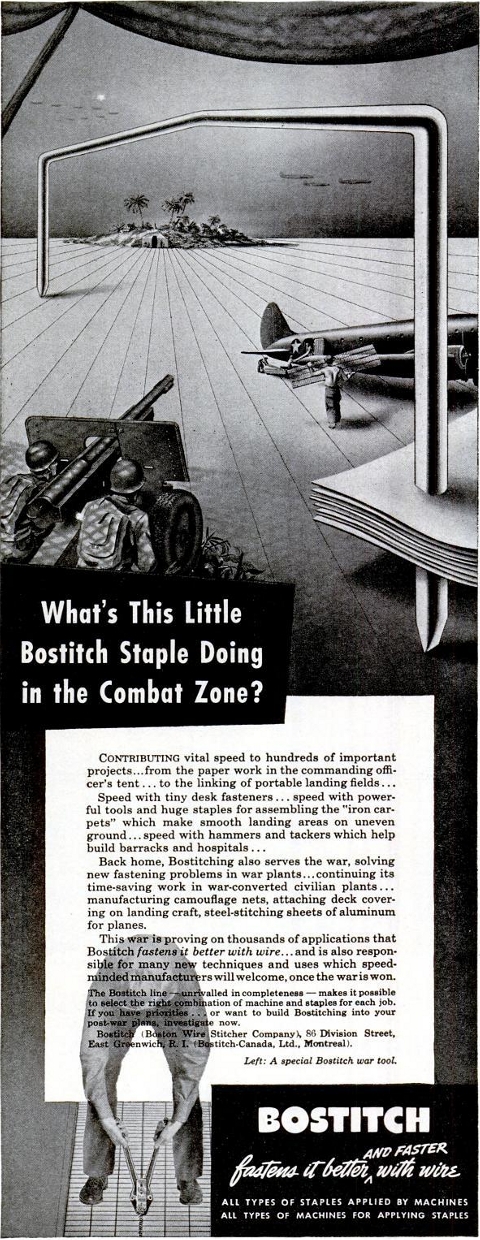


Framed or unframed, desk size to sofa size, printed by us in Arizona and Alabama since 2007. Explore now.
Shorpy is funded by you. Patreon contributors get an ad-free experience.
Learn more.

- Tough Guys
- Lost in Toyland
- And without gloves
- If I were a blindfolded time traveler
- Smoke Consumer Also Cooks
- Oh that stove!
- Possibly still there?
- What?!?
- $100 Reward
- Freeze Frame
- Texas Flyer wanted
- Just a Year Too Soon
- WWII -- Replacing men with women at the railroad crossing.
- Yes, Icing
- You kids drive me nuts!
- NOT An Easy Job
- I wonder
- Just add window boxes
- Icing Platform?
- Indiana Harbor Belt abides
- Freezing haze
- Corrections (for those who care)
- C&NW at Nelson
- Fallen Flags
- A dangerous job made worse
- Water Stop
- Passenger trains have right of way over freights?
- Coal
- Never ceases to amaze me.
- Still chuggin' (in model form)
Print Emporium
Daily Fiber: 1942

September 1942. "Substitute materials -- something new in apple containers. To replace nail-bound wooden boxes, a fiber carton has been developed." An innovation known today as the cardboard box. Medium format nitrate negative by William Perlitch for the Office of War Information. View full size.
Wooden Crates
Before the advent of cardboard boxes to ship fruit they used wooden crates with, usually, a divider in the middle. All sorts of fruits were shipped in those wooden crates such as apples, oranges, peaches, and others. As a kid, we used to collect those wooden crates at the beginning of winter because you could pack snow into each section of the crate and have two snow blocks to build a snow fort or an igloo. When cardboard came on the scene, it all changed. You just can't pack much snow into a cardboard container.
These boxes got a lot of use during WWII.
Three different grades (V1, V2, and V3, from most to least protective) were used by the military to pack all types of boxable supplies during the war. Saved a lot of wood and nails.

























On Shorpy:
Today’s Top 5